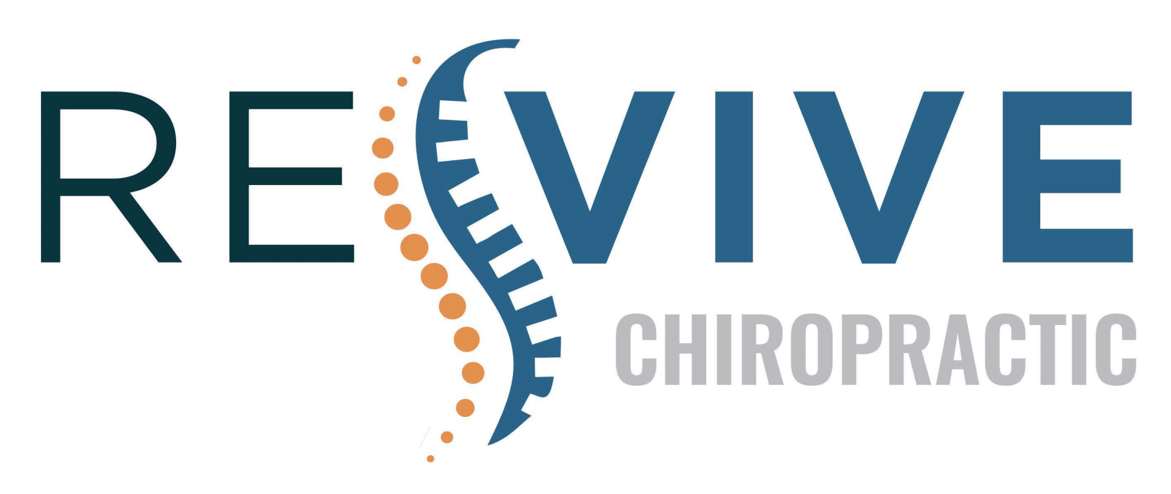If you've ever experienced the debilitating effects of migraines, you know how essential it is to find effective relief. Chiropractic care offers a range of methods that not only target the root causes but also promote long-term wellness. From spinal adjustments to personalized treatment plans, each approach plays a role in easing your pain. You might be surprised by how these techniques work together to enhance your overall quality of life. Curious about the specific ways chiropractic care can transform your experience with migraines? Let's explore these strategies further.
Improved Spinal Alignment
When it comes to managing migraine pain, improved spinal alignment can make a significant difference in how you feel. Your spine plays a vital role in your overall health, and misalignments can lead to increased nerve irritation, tension, and discomfort. By addressing these issues through chiropractic care, you can potentially reduce the frequency and intensity of your migraines.
During a chiropractic session, your chiropractor will assess your spine's alignment and identify any misalignments that might be contributing to your migraines. They'll use manual adjustments to realign your spine, which helps restore proper function to your nervous system.
When your spine is properly aligned, it can relieve pressure on your nerves and improve blood flow and circulation, which are essential for reducing migraine triggers.
In addition to adjustments, your chiropractor may recommend specific exercises or stretches that support spinal health. These activities can help reinforce the adjustments made during your visits, ensuring long-term benefits.
You might also find that improved spinal alignment enhances your posture, which can further alleviate strain and tension in your body.
Reduced Muscle Tension
How often do you find yourself holding tension in your neck and shoulders during a migraine? It's common to clench those muscles tight, which only exacerbates your discomfort. When you're in pain, your body instinctively reacts by tightening up, creating a vicious cycle of tension and headaches. This is where chiropractic care can make a significant difference.
Chiropractors focus on realigning your spine and addressing muscle tension, helping to release that built-up stress in your neck and shoulders. By performing gentle adjustments, they can target specific areas of tightness, allowing your muscles to relax. You'll often find that these adjustments not only alleviate pain but also improve your overall mobility.
Through chiropractic techniques, you'll learn how to recognize when your muscles are tense and how to actively release that tension. This approach empowers you to take control of your migraine triggers, enhancing your daily comfort. Regular chiropractic visits can help keep your muscles relaxed, reducing the frequency and intensity of your migraines.
Moreover, your chiropractor may recommend exercises and stretches tailored to your needs, further aiding in muscle relaxation. These practices help reinforce the benefits of your adjustments, leading to long-term relief. Instead of merely masking the pain, you're addressing the root cause.
Enhanced Blood Flow
Muscle tension isn't the only factor contributing to migraine pain; blood flow plays a significant role too. When your blood circulation is compromised, it can lead to various issues, including headaches and migraines. Chiropractic care can help enhance blood flow, which is essential for alleviating migraine symptoms.
During a chiropractic adjustment, the practitioner focuses on aligning your spine and other joints. This realignment can improve blood circulation throughout your body, including the head and neck regions. Improved blood flow delivers essential nutrients and oxygen, which can help reduce the frequency and intensity of your migraines.
Additionally, by addressing misalignments in your spine, chiropractic care may help remove pressure on blood vessels and nerves. When these structures are under strain, it can hinder proper blood flow, potentially triggering migraine episodes. By ensuring that your spine is properly aligned, you're allowing your body to function more efficiently, which can lead to fewer migraines.
You might also notice that enhanced blood flow can improve your overall well-being. With more oxygen and nutrients reaching your brain, you may experience clearer thinking and increased energy levels. This boost can further contribute to reducing migraine triggers, as fatigue and mental strain are common contributors to migraine pain.
Incorporating chiropractic adjustments into your wellness routine can be a proactive step toward managing migraine pain effectively. By focusing on enhanced blood flow, you're supporting your body's natural healing processes and improving your quality of life.
Stress Relief Techniques
Many people find that stress is a significant trigger for their migraine pain, making effective stress relief techniques essential for management. You might want to explore various methods that can help you reduce stress levels and, in turn, lessen the frequency and intensity of your migraines.
One technique you can try is deep breathing exercises. By focusing on your breath, you can calm your mind and body. Take a few moments each day to inhale deeply through your nose, hold for a few seconds, and then exhale slowly through your mouth. This simple practice can lower stress hormones and promote relaxation.
Another effective method is progressive muscle relaxation. You can do this by tensing and then relaxing different muscle groups in your body. Start from your toes and work your way up to your head, paying attention to how your body feels as you release tension. This technique not only reduces stress but also helps you become more aware of physical sensations that may contribute to migraines.
Incorporating regular physical activity into your routine can also help manage stress. Aim for at least 30 minutes of moderate exercise most days. Whether it's a brisk walk, yoga, or dancing, moving your body releases endorphins, which can naturally elevate your mood and decrease stress.
Finally, don't underestimate the power of mindfulness and meditation. Spending just a few minutes each day in quiet reflection can help center your thoughts and create a sense of calm, making it easier to cope with stress and potential migraine triggers.
Personalized Treatment Plans
Creating a personalized treatment plan for migraine pain can greatly improve your quality of life. When you visit a chiropractor, they'll assess your specific needs and symptoms to tailor a plan just for you. This individualized approach guarantees that you receive care that directly addresses the root causes of your migraines, rather than a one-size-fits-all solution.
Your chiropractor will start by taking a detailed history of your migraines, including their frequency, duration, and any triggers you've identified. They'll also evaluate your overall health, lifestyle, and any other contributing factors. From there, they'll develop a treatment plan that may include a combination of chiropractic adjustments, soft tissue therapy, and lifestyle modifications.
These personalized treatment plans not only focus on immediate pain relief but also aim to prevent future migraines. By addressing underlying issues such as spinal misalignments or muscle tension, you can experience lasting relief. Your chiropractor may also recommend exercises or stretches tailored to your specific needs, which can further support your treatment and enhance your overall well-being.
Moreover, regular follow-ups allow your chiropractor to adjust your plan as needed, guaranteeing it remains effective. This ongoing assessment helps you stay on track and adapt to any changes in your migraine patterns or overall health.
Posture Correction
Proper posture plays an essential role in managing migraine pain. When you maintain an aligned spine and balanced body, you can greatly reduce the tension that often triggers migraines.
Poor posture not only strains your muscles but also affects the nerves in your neck and back, leading to discomfort and potential migraine onset.
Consider how proper posture can change your daily life:
- Relieve tension headaches: By sitting and standing correctly, you can alleviate the pressure that builds up in your neck and shoulders.
- Boost energy levels: Good posture allows for better circulation, which means more oxygen and nutrients reach your muscles and brain, keeping you energized.
- Enhance focus and productivity: When you're not battling discomfort from poor posture, you can concentrate better on your tasks.
Chiropractors specialize in identifying and correcting posture issues. Through adjustments and personalized exercises, they'll help you build awareness of your body's alignment.
Over time, you'll develop healthier habits that not only ease migraine pain but also improve your overall well-being.
Trigger Point Therapy
Trigger point therapy focuses on identifying painful muscle areas that may contribute to your migraine pain.
By using specific techniques for muscle release, you can alleviate tension and improve overall comfort.
Let's explore how this targeted approach can help you manage your migraines effectively.
Identifying Painful Muscle Areas
Many people experience tension in specific muscle areas that can contribute to migraine pain, making it essential to identify these painful spots for effective relief.
Recognizing where you're feeling tightness can be the first step toward addressing the root cause of your discomfort.
You might notice tension in the following areas:
- Neck and shoulders: These muscles often bear the brunt of stress and can create a tight, throbbing sensation that radiates to your head.
- Upper back: Poor posture or prolonged sitting can lead to painful knots that trigger migraines.
- Temporalis and masseter muscles: These jaw muscles can clench during stressful situations, leading to referred pain in the head.
Techniques for Muscle Release
Finding and addressing those painful muscle areas can greatly alleviate migraine pain, and one effective way to do this is through trigger point therapy. This technique focuses on identifying and releasing tight knots within your muscles that contribute to tension and discomfort.
During a trigger point therapy session, your chiropractor will apply direct pressure to these specific spots, helping to release built-up tension. You might notice some discomfort during the process, but it's usually followed by a sense of relief as the muscle releases.
Your chiropractor may also use techniques like stretching or massage to enhance the effects of the release.
To maximize the benefits, you can practice self-care at home. Stretching the affected muscles or using a foam roller can help maintain the release. Additionally, staying hydrated and managing your stress levels will support muscle recovery and overall well-being.
Incorporating trigger point therapy into your migraine management plan can help pinpoint and relieve pain sources, allowing you to enjoy a better quality of life.
Conclusion
Incorporating chiropractic care into your migraine management can greatly improve your quality of life. By focusing on spinal alignment, muscle tension relief, and personalized treatment plans, you can take control of your migraine triggers. With techniques like stress relief and posture correction, you'll not only reduce headache frequency but also enhance your overall well-being. Regular visits to a chiropractor empower you to proactively manage your migraines, leading to a healthier, more vibrant you.



